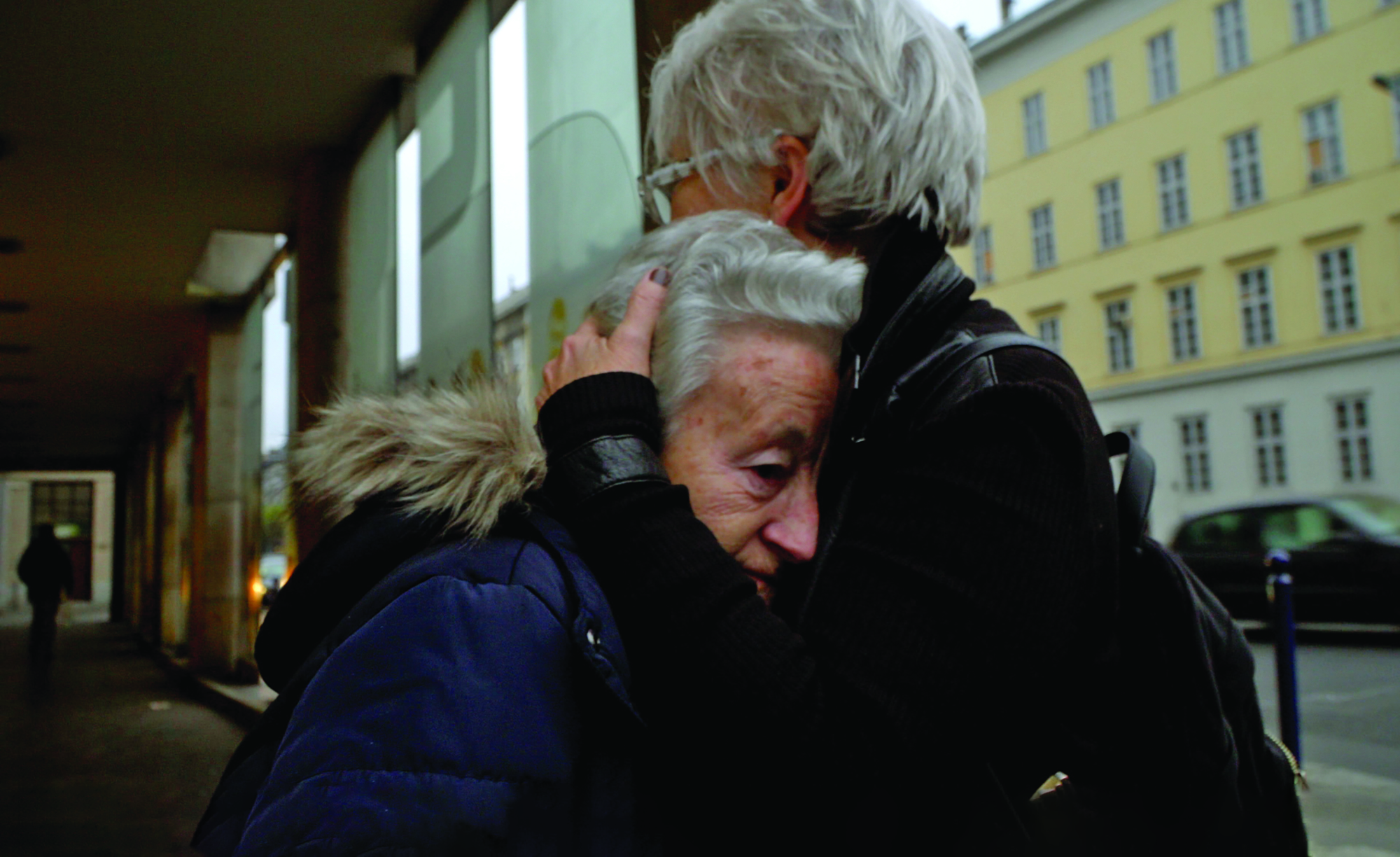Lili (2018), the latest documentary by writer/director Peter Hegedus, begins not with new or archival footage, but with historical re-enactment. In grainy, flickering black-and-white, the film lingers on the face of a small blonde girl, eight years old, clutching her mother’s hand as her father pushes a wheelbarrow.[1]In the re-enactment scenes, Lili is played by Kiara Kalmár; her mother, by Lívia Gyurkó; and her father, by Kristóf Fekete. This image will recur again and again throughout the documentary. Glimpses of the family culminate in a longer, more complex scene, one that asks the viewer to interpret all that has come before through the lens of trauma. The small child is Lili Gárdonyi; it is 1944, and close to 200 Jewish labourers are about to be slaughtered at a train station.
‘The massacre has haunted me all my life,’ says Lili, now in her eighties, in voiceover. It’s a strong opening scene, one that becomes something of a red herring throughout the film and, eventually, a dissonant note in an otherwise-intimate production. And it vastly complicates my reaction to the work in ways that are hard for me to be objective about.
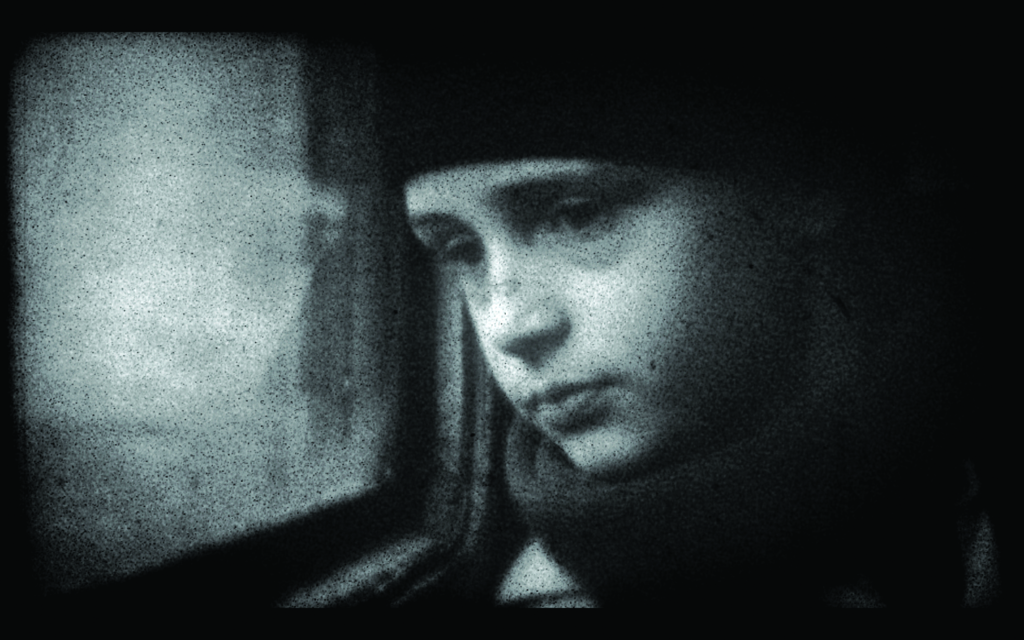
*
I am the daughter of a Hungarian refugee. This, and the fact that I write about motherhood and intergenerational trauma, is why Metro approached me to review Lili, a film about Hungarian maternal trauma and intergenerational suffering. And, in some ways, this documentary was tailor-made for me; though it’s fairly robust, it is rare to see the Hungarian-Australian community represented anywhere in media.
Though some Hungarians immigrated immediately following World War II, a large contingent arrived in 1956 and 1957, after the failure of the Hungarian Revolution of 1956.[2]See Lee Edwards & Elizabeth Edwards, ‘Hungarian Revolution of 1956 – a Summary’, History on the Net, 2016, <https://www.historyonthenet.com/hungarian-revolution-2>, accessed 22 October 2019. Beginning as a student protest, the uprising snowballed when the Állam Védelmi Hatóság (ÁVH), the Hungarian secret police, fired on the demonstrators and ordinary Hungarians poured into Budapest to fight alongside the students.
Some, like Lili, threw themselves into their new roles as freedom fighters. Upon returning with her daughter Edie to Budapest, where the uprising’s sixtieth anniversary is being commemorated, she recounts her contribution to the revolution: collecting the dead bodies of students for containment in makeshift coffins, to clear the way for protesters and to preserve the dead for later burial. The uprising ended brutally. Soviet tanks rolled in to the country, and Soviet soldiers killed 2500 protesters. At least 200,000 people fled Hungary,[3]See ‘Soviets Put Brutal End to Hungarian Revolution’, History, updated 17 July 2019, <https://www.history.com/this-day-in-history/soviets-put-brutal-end-to-hungarian-revolution>, accessed 17 October 2019. among them Lili, whose friend’s husband, a member of the ÁVH, had tipped her off to her impending arrest and probable execution.
Dispossession creates the same material conditions for everyone, but it is clear from watching Lili on screen, sixty years later, with tears rolling down her face, how deeply that sense of exile runs and how strongly her sense of self is tied to her homeland.
At the same time, my grandmother was sewing her jewellery into her coat hem and dressing my father warmly, preparing to make a planned escape. Freedom of movement was severely restricted under communism, and she had long sought permission to leave Hungary and emigrate to Australia, where her sisters and brothers had already started new lives. With her husband and child, she crossed the border into Austria, spending nine months in a refugee camp before getting authorisation to bring the family here.
Some escaped, willingly; some left, distraught. Dispossession creates the same material conditions for everyone, but it is clear from watching Lili on screen, sixty years later, with tears rolling down her face, how deeply that sense of exile runs and how strongly her sense of self is tied to her homeland. Edie describes the ‘Hungarian bubble’ in Brisbane that she grew up in as ‘not really a real world, because it wasn’t in Hungary. So what I lived in was probably leftover bits and pieces of a distorted life that they brought with them.’
Speaking Hungarian and translating English for her mother, Edie drives the documentary forward. It is her awareness of past-in-present that compels her to seek out her mother’s history – that, and her belief that the past can be healed through communication, honesty and love. It is painful to watch her push against resistance at every side, to see her fail to comprehend that, sometimes, the wound is simply too deep, and the scar tissue, too tough.
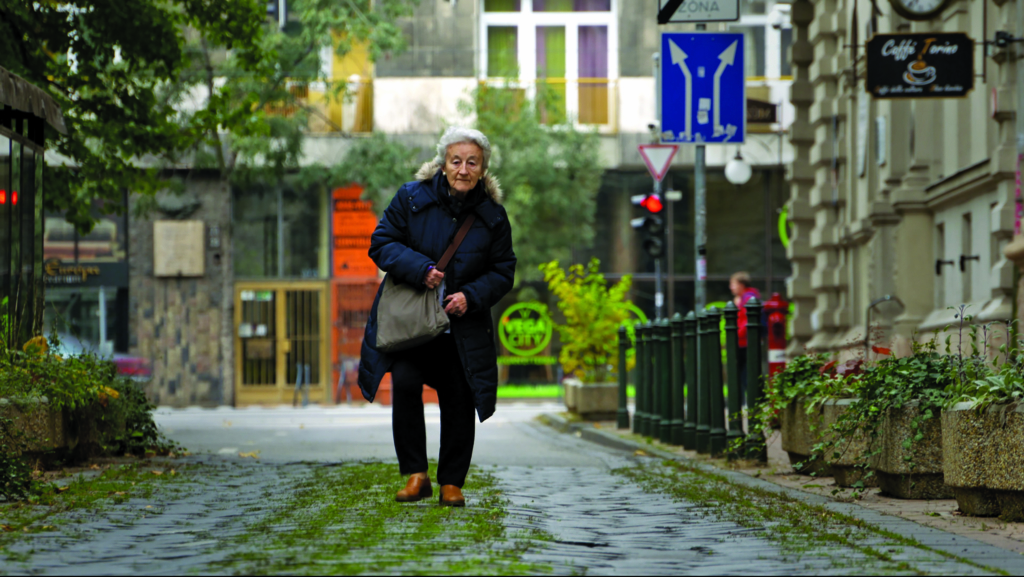
*
The press kit for Lili identifies it as an ‘observational documentary’, following Edie as she ‘put[s] the past to rest’, but the film is titled for Lili and her oldest daughter.[4]Ronin Films, Lili press kit, 2018, pp. 3–4. Hegedus recalls that he came to be interested in Lili as a subject after meeting her as a favour to a fellow Hungarian friend:
We spent two hours together and she told me her life story: about how as a child she witnessed the massacre of 199 Jewish forced labourers and then in her early 20s she helped freedom fighters in their cause […] It was when she told me that she had to leave her child behind in communist Hungary that I thought we need to explore this story further.[5]Peter Hegedus, ‘How It Happened’, in Ronin Films, ibid., p. 5.
This seemingly core aspect of Lili’s story takes a long while to be introduced. Details of Lili’s life are spooled out by inches, each complicating the narrative by reaching further into the past. Seeking to make the genealogy more manageable, Hegedus has opted for a slow ‘striptease’ of the family tree – yet this contrivance throws off-balance the dynamic of the film and threatens to subsume its core relationship, between Edie and Lili herself. It’s hard not to feel fatigued; the effect is a little but wait, there’s more!
In reality, the relationships are not hard to parse. Lili, young and naive, fell in love and gave birth to Kicsi Lili (Young Lili) alone. In Australia, she married and had Edie; Edie gave birth to a daughter, Kelly, but relinquished custody during a period of serious illness. Back in Hungary, Young Lili grew up, married, and gave birth to Judit and another daughter, but lost her husband and Judit’s sister in a car crash; she soon withdrew from her mother and her remaining child. Judit, now an adult, is seen in the documentary with her husband and baby daughter, Bogi, completing the family line.
It is the absence of Young Lili around which the film’s narrative turns. Edie, in accompanying her mother to Budapest, is planning to fly on to Canada, leaving Lili with Judit, in order to broach the gap created by Young Lili’s estrangement. Edie is carrying government documents that she hopes will prove to her sister that their mother did attempt to bring her to Australia, and that Lili wanted Young Lili in her care, contrary to Young Lili’s memories of short, unhappy visits, and Lili’s own admission that the pregnancy – and, implicitly, the child – was unwanted and unplanned.
Though Edie does, in fact, sit down and talk with Young Lili, the latter doesn’t give Hegedus permission to film her. The reconciliation is not pulled off, and Edie returns to Budapest, shaken but still hoping some kind of healing will take place.
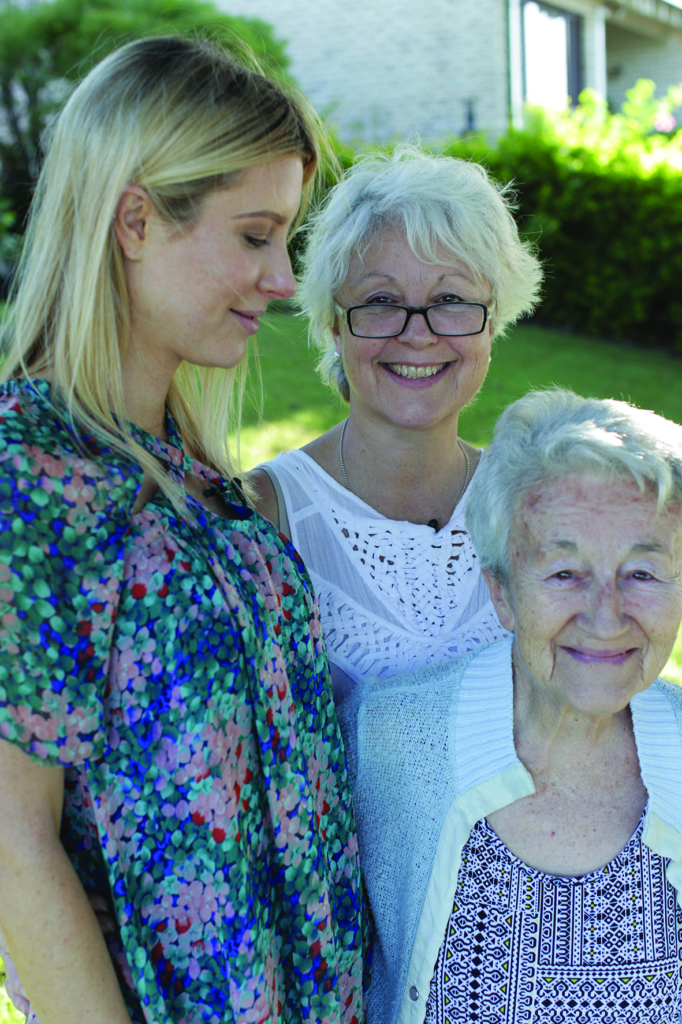
*
In a film as small in scope as this one, the best moments tend to be the quiet ones. There’s a lovely grace in watching Lili play with Bogi and build rapport with Judit; these scenes are natural and relaxed, with none of the tension that drives Edie’s presence in the film. Judit emerges as a warm, calm counter to her anxious aunt; ‘I wish I could talk to Mum the way I talk to you,’ she murmurs to Edie, while stirring something that is cooking on the stove. The developing relationship between Lili, Judit and Edie is one of the documentary’s strongest threads; it provides an almost tangible current of family feeling and emergent love.
But we are not given much time to get to know these women outside of their relationship to Young Lili. As the film goes on and the re-created footage recurs, the score subtly foreboding, the film’s intimacy begins to feel claustrophobic, hemming in the figure of Young Lili in a way I found increasingly uncomfortable.
Despite Edie’s repeated disclaimers – she acknowledges that Young Lili’s abandonment must have been heartbreaking – an edge emerges. ‘[Young] Lili assumes that my mother ran away and left her. In an ironic way, she’s left her daughter,’ she tells the camera, defensively. It’s a false equivalence that is oddly callous, and never really challenged within the film.
I feel as though I am being hard on Edie, or unfair. What I am struggling with, I think, is Lili’s implicit endorsement of her desire to bring the family back together, despite the film being pegged as ‘observational’. Without Edie’s determination, there is no movie, and so the camera follows her without question, unheeding of how serious a mistake she might be making.
To Hegedus’ credit, Edie is not flattered; she is shown as very clearly human, grappling with something painful that she does not understand. Nor does the film shy away from scenes in which her determined peacemaking falls flat. In a conversation with Young Lili’s aunt, she is firmly rebuffed, the older woman refusing to participate in what she feels are fictions about the quality of Lili’s mothering. Even Lili expresses frustration about Edie’s tendency to ‘always pretty things up’. You can sense a lifetime of anxious caretaking in Edie’s inability to let things go or remain as they are, and her determination to fix things.
But, rather than explore what this means for Edie’s relationship with her mother, Lili aligns itself with her reconciliation project, turning its lens from the broader world. I rarely, rarely bemoan the lack of talking heads in a documentary, but I find myself so troubled by the ad-hoc way in which Edie’s journey is presented: with a camera alongside for company, never challenged or contexualised. The idea of ‘mothers abandoning their children’ as a generational issue is floated, but not engaged with; there is no mediator present, or therapist interviewed, or system of support for either woman in place should the meeting turn sour.
What I find most upsetting is that Young Lili, in her absence, is never given a representative. There is a rich literature around generational trauma, war and abandonment that is not broached; no psychologist or historian is invited to explain how life under communist rule compounded and entrenched the deep losses of the war, and affected child development. Nobody seems willing to acknowledge that she may be extraordinarily scarred – that trauma affects emotional attachment, and shapes relationships in exhausting and sometimes debilitating ways. Trauma and attachment are increasingly being interrogated in scholarship; a 2015 study, for example, showed that insecure attachment in childhood, whereby the bond between child and caregiver is broken or developed unhealthily, can exacerbate the destabilising symptoms of post-traumatic stress disorder: ‘[I]ndividuals with greater attachment anxiety reported stronger physical reactions to memories of their trauma and more frequent voluntary and involuntary rehearsal of their trauma memories.’[6]Christin M Ogle, David C Rubin & Ilene C Siegler, ‘The Relation Between Insecure Attachment and Posttraumatic Stress: Early Life Versus Adulthood Traumas’, Psychological Trauma: Theory, Research, Practice, and Policy, vol. 7, no. 4, July 2015, p. 324.
Hegedus respects the lines Young Lili has drawn; we never see her face. But, in accompanying Edie on her journey to Canada, and in facilitating and filming it in the first place, he allows for the development of a narrative in which Young Lili is the stumbling block to the family’s cohesiveness: the impediment to a happy ending, and not a woman who may have pulled away from the world in order to protect herself from her own trauma, or provide herself with the stability she may badly need.
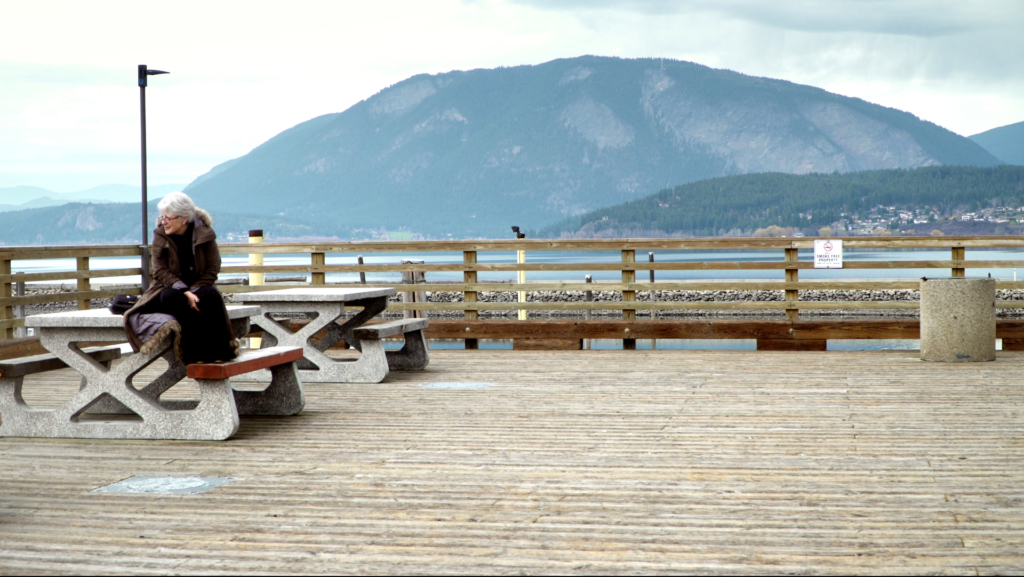
*
Around two-thirds of the way through the film, the historical re-enactment begins to take up more space. Flickering and teasing, it resolves into a tableau that throws the question of trauma into ever more pertinent light. This is the massacre alluded to in the film’s opening scenes, staged by Hungarian actors to round out the documentary’s footage.
‘The trauma in [Lili’s] life, I personally think it sparked everything else,’ says Edie. The man pushing the wheelbarrow in this scene is Lili’s father; he is loading their possessions onto a train. A train full of forced labourers, mostly Jews, arrives from the opposite direction, and the prisoners attempt to escape. Lili has been sent to fill a jug of water at the end of the station and sees a prisoner tug at her father’s legs, then a soldier pulls the prisoner away and kills him with the butt of his gun.
This footage is played and replayed, with subtle changes suggesting the vagaries of memory, as Edie and Lili attempt to get to the bottom of Lili’s father’s involvement. After the massacre, he disappeared for three years, then was caught and jailed; a researcher Edie has hired lets her know that her mother’s father, yes, was the local leader of the Hungarian far-right Arrow Cross Party, and actively took part in the massacre, helping Nazi soldiers capture and execute escapees.
I am eliding parts of the way this information is unfurled, but this is the bones of it. This part of the story is not hard to work out, despite the way the footage is used, interstitially, to suggest a deeper, partially repressed trauma in Lili’s own life. Of course Lili’s father was culpable in the massacre. There is no position of neutrality within a massacre: surely, to survive one means either collusion or dumb luck.
But the weight of this collusion is another thing that is never accounted for in Lili. In tight cinematographic shots, Lili’s father’s true role in the massacre is framed within the general claustrophobia of the film: as a personal betrayal, and little more.
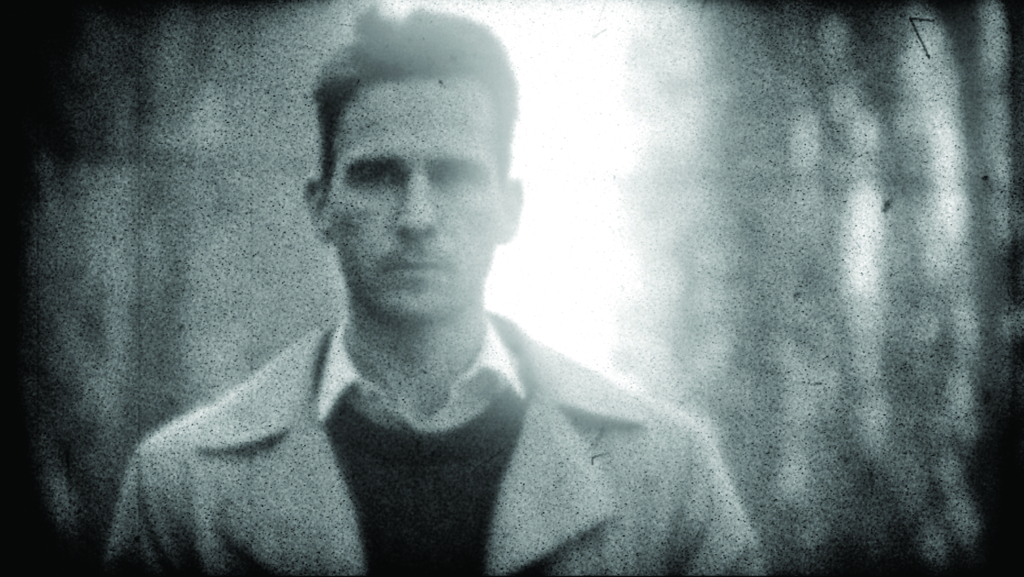
*
I did not grow up in the Hungarian bubble, for the simple reason that my grandparents were Jewish. When the first Soviet tanks rolled through their town, Kisvárda, a neighbour scrawled on a fence near their house: ‘This time we won’t bother with the camps’. When my family came to Australia, they settled not in Brisbane, where Lili wound up, but in Melbourne’s St Kilda, the ‘bagel belt’, among Jewish émigrés who had clustered there after persecution in Russia, Poland, Slovakia, Germany – all of Europe that had been made unsafe.
My father, unlike Edie, lost his Hungarian quickly, because my grandparents hated Hungary so much, or hated what its citizens had let it become. They were eager to turn their backs on a country that had harassed Jews as a matter of form for centuries, and in which violence had escalated even before Nazi occupation during the war.
It is in this light that the tightness of focus within Lili begins to feel almost like an erasure. When the Arrow Cross is mentioned, for example, it is merely as the local equivalent of the Nazi Party, so that the viewer is given the sense that Hungarians were collaborators, not authors of the atrocities committed. But, in fact, anti-Semitic political activity had been rising since at least 1919, when Miklós Horthy founded the ‘White’ militia to overthrow what he characterised, out of expedience, as a ‘Judeo-Bolshevik’ dictatorship. Under Horthy, laws were brought in limiting Jewish participation in universities and civic life – Jews had long been banned from owning land – and, by the time World War II broke out, Jewish citizens enjoyed severely reduced rights.[7]See Anna Porter, ‘Seventy-five Years Later, Hungary Still Hasn’t Come to Terms with Its Role in the Holocaust’, Quillette, 15 May 2019, <https://quillette.com/2019/05/15/seventy-five-years-later-hungary-still-hasnt-come-to-terms-with-its-role-in-the-holocaust/>; and Tamás Révész, ‘Post-war Turmoil and Violence (Hungary)’, International Encyclopedia of the First World War, 5 August 2019, <https://encyclopedia.1914-1918-online.net/article/post-war_turmoil_and_violence_hungary>, both accessed 17 October 2019. Before German forces occupied Hungary in 1944, the Hungarian military had already massacred an estimated 3809 Jews and suspected communists at Újvidék (Novi Sad) in Serbia,[8]See ‘Novi Sad’, Killing Sites – the First Stage of the Holocaust in Serbia and Croatia, <http://killingsites.org/novi-sad/>, accessed 17 October 2019. and slaughtered Jews and other citizens elsewhere of its own accord.
The Arrow Cross itself, formed in 1935, was one of a group of extreme fascist parties that emerged in the 1930s, and subscribed to an ‘a-Semitism’ that was obsessed with Hungarian racial purity.[9]See Michael Dickerman, ‘Arrow Cross’, in Paul R Bartrop & Dickerman (eds), The Holocaust: An Encyclopedia and Document Collection, vol. 1, ABC-CLIO, Santa Barbara & Denver, 2017, p. 40; and Zoltán Paksy, ‘Book Reviews: Szálasi Ferenc: Politikai Életrajz [Ferenc Szálasi: A Political Biography]’, Hungarian Historical Review, vol. 5, no. 4, 2016, p. 922. After a German-backed coup deposed Horthy in the last months of the war, Arrow Cross leader Ferenc Szálasi perpetrated what the United States Holocaust Memorial Museum characterises as ‘a reign of arbitrary terror’.[10]‘Hungary After the German Occupation’, Holocaust Encyclopedia, United States Holocaust Memorial Museum website, <https://encyclopedia.ushmm.org/content/en/article/hungary-after-the-german-occupation>, accessed 17 October 2019. I don’t want to go into the details; my grandmother told stories of neighbours paying Nazis for protection.
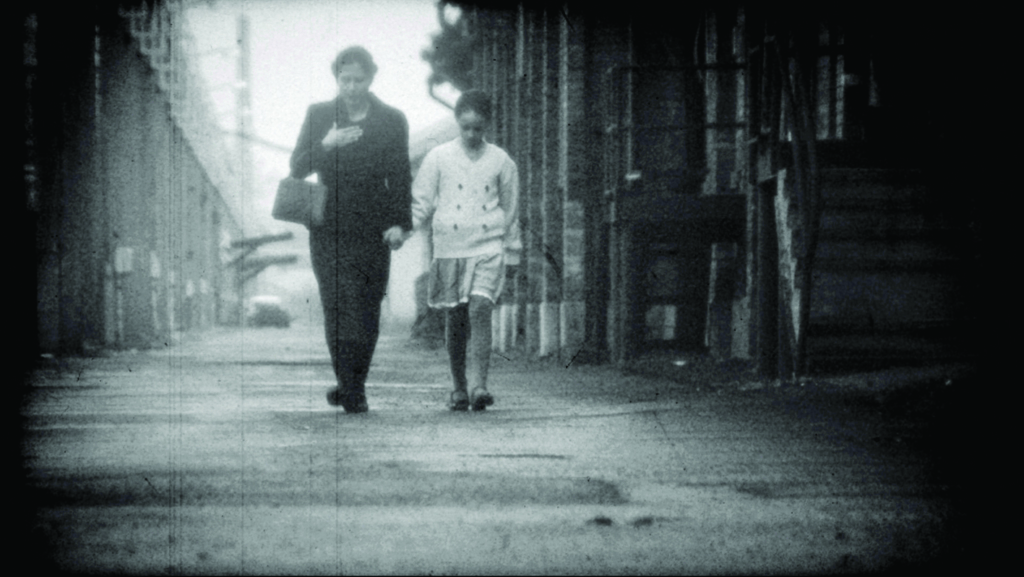
So Lili and Edie’s shock at the confirmation that one of their own family members participated in Arrow Cross violence is not merely about the question of collusion, and yet the film never raises the topic of anti-Semitism itself. It is framed as a deeply buried family secret, while, in reality – as Hegedus must know – the issue is very much alive. Recent research has shown that anti-Semitic sentiment in Hungary has risen sharply under authoritarian leader Viktor Orbán,[11]‘Medián Poll on Hungarian Anti-Semitism’, Hungarian Spectrum, 20 April 2016, <https://hungarianspectrum.org/2016/04/20/median-poll-on-hungarian-anti-semitism/>, accessed 17 October 2019. who, as The Atlantic’s Ira Forman reports, ‘claims to maintain a “zero tolerance” policy on anti-Semitism while dog-whistling to anti-Semites’.[12]Ira Forman, ‘Viktor Orbán Is Exploiting Anti-Semitism’, The Atlantic, 14 December 2018, <https://www.theatlantic.com/ideas/archive/2018/12/viktor-orban-and-anti-semitic-figyelo-cover/578158/>, accessed 17 October 2019. Members of the now-banned Magyar Gárda, an Arrow Cross–style neo-fascist militia, are linked to Hungarian political party Jobbik; the Magyar Gárda itself is endorsed by hard-right Hungarian-American pundit Sebastian Gorka, formerly a member of US President Donald Trump’s staff.[13]See Matthew Rozsa, ‘Sebastian Gorka Once Publicly Supported a Violent Anti-Semitic Militia’, Salon, 4 April 2017, <https://www.salon.com/2017/04/04/sebastian-gorka-once-publicly-supported-a-violent-anti-semitic-militia/>, accessed 17 October 2019.
It is not that I expect Judit, Edie or Lili, protagonists of their own drama, to suddenly give a disquisition on the state of Jewish rights. But this is where having outsiders contextualise what it means to discover such an atrocity within your own family – and how its effect may ricochet down family lines – would have grounded the film against its own tendency towards solipsism. Instead, Hegedus’ camera rests on footage from his own historical reproduction, as music swells to a climax. In a scene in which Jews – or actors playing real, historical brothers and sons and fathers – are marched to mass graves and shot, the camera lingers on a little blonde girl’s face, and lingers, and lingers, and lingers.
*
To what do we owe the dead? That’s the question that tends to recur through Jewish art and literature, and one that is not seemingly considered in this film. Again, I wrestle with that impulse of unfairness, concerned that I may be asking something of Lili that, outside of its press kit, it has not suggested that it can or should provide. But the exclusion of Jewish voices from this film, of any other voices than those of Lili, Edie, Judit, skews the story towards something more insular than the weight of its history deserves.
I may be asking something of Lili that … it has not suggested that it can or should provide. But the exclusion of Jewish voices from this film, of any other voices than those of Lili, Edie, Judit, skews the story towards something more insular than the weight of its history deserves.
There is so much that made my heart turn over while watching this documentary. It is there in the footage of Budapest’s yellow trams, of the three women eating cream-daubed pastries at – is it Gerbeaud? It is there in Lili’s blouses and her mannerisms, the wry half-shrug that both acknowledges and dismisses pain or anger, one of my late grandmother’s own characteristic gestures. My grandparents have both passed, now; I don’t hear anyone protest, ‘Nem, nem, nem!’ or make the lovely, funny, guttural sounds of the language.
But that same familiarity – and the soft sweetness of many of Lili’s lighter scenes – is what makes me so uncomfortable with what has been left out. Watching this film, you would not know that Lili’s trauma, and Young Lili’s, fits into a national and generational pattern; or that there are people, like Hungarian-Canadian physician Gabor Maté, who have been studying this very trauma for decades; or that hundreds of thousands of hours of testimony and oral history are readily available through institutions such as Shoah foundations the world over.
What the film ultimately does, in refraining from contextualising its subjects, is refuse space for true sorrow, for grief. There is one revealing scene – a Skype call from Edie and Lili to Judit – that sums up my frustrations with Lili’s shortcomings. When Judit asks Lili how she is, she responds in a breaking voice, ‘I can’t tell you, darling. Only my body is here. My heart and soul are with you.’ Edie does not even give this statement the full weight of a breath before jumping into an ironic rendition of ‘Always Look on the Bright Side of Life’, to which Judit, a beat later, sings along. Lili suffers from an equal unwillingness to give due weight to its protagonists, to treat them with the seriousness of contextualisation. There is so much more to be said about these women, but Hegedus, after their failed reunion, seemingly doesn’t want to hear it. Instead, he returns to his re-enactment to close out the film, searching grimly for poignancy in a revised, invented past.
Endnotes
| 1 | In the re-enactment scenes, Lili is played by Kiara Kalmár; her mother, by Lívia Gyurkó; and her father, by Kristóf Fekete. |
|---|---|
| 2 | See Lee Edwards & Elizabeth Edwards, ‘Hungarian Revolution of 1956 – a Summary’, History on the Net, 2016, <https://www.historyonthenet.com/hungarian-revolution-2>, accessed 22 October 2019. |
| 3 | See ‘Soviets Put Brutal End to Hungarian Revolution’, History, updated 17 July 2019, <https://www.history.com/this-day-in-history/soviets-put-brutal-end-to-hungarian-revolution>, accessed 17 October 2019. |
| 4 | Ronin Films, Lili press kit, 2018, pp. 3–4. |
| 5 | Peter Hegedus, ‘How It Happened’, in Ronin Films, ibid., p. 5. |
| 6 | Christin M Ogle, David C Rubin & Ilene C Siegler, ‘The Relation Between Insecure Attachment and Posttraumatic Stress: Early Life Versus Adulthood Traumas’, Psychological Trauma: Theory, Research, Practice, and Policy, vol. 7, no. 4, July 2015, p. 324. |
| 7 | See Anna Porter, ‘Seventy-five Years Later, Hungary Still Hasn’t Come to Terms with Its Role in the Holocaust’, Quillette, 15 May 2019, <https://quillette.com/2019/05/15/seventy-five-years-later-hungary-still-hasnt-come-to-terms-with-its-role-in-the-holocaust/>; and Tamás Révész, ‘Post-war Turmoil and Violence (Hungary)’, International Encyclopedia of the First World War, 5 August 2019, <https://encyclopedia.1914-1918-online.net/article/post-war_turmoil_and_violence_hungary>, both accessed 17 October 2019. |
| 8 | See ‘Novi Sad’, Killing Sites – the First Stage of the Holocaust in Serbia and Croatia, <http://killingsites.org/novi-sad/>, accessed 17 October 2019. |
| 9 | See Michael Dickerman, ‘Arrow Cross’, in Paul R Bartrop & Dickerman (eds), The Holocaust: An Encyclopedia and Document Collection, vol. 1, ABC-CLIO, Santa Barbara & Denver, 2017, p. 40; and Zoltán Paksy, ‘Book Reviews: Szálasi Ferenc: Politikai Életrajz [Ferenc Szálasi: A Political Biography]’, Hungarian Historical Review, vol. 5, no. 4, 2016, p. 922. |
| 10 | ‘Hungary After the German Occupation’, Holocaust Encyclopedia, United States Holocaust Memorial Museum website, <https://encyclopedia.ushmm.org/content/en/article/hungary-after-the-german-occupation>, accessed 17 October 2019. |
| 11 | ‘Medián Poll on Hungarian Anti-Semitism’, Hungarian Spectrum, 20 April 2016, <https://hungarianspectrum.org/2016/04/20/median-poll-on-hungarian-anti-semitism/>, accessed 17 October 2019. |
| 12 | Ira Forman, ‘Viktor Orbán Is Exploiting Anti-Semitism’, The Atlantic, 14 December 2018, <https://www.theatlantic.com/ideas/archive/2018/12/viktor-orban-and-anti-semitic-figyelo-cover/578158/>, accessed 17 October 2019. |
| 13 | See Matthew Rozsa, ‘Sebastian Gorka Once Publicly Supported a Violent Anti-Semitic Militia’, Salon, 4 April 2017, <https://www.salon.com/2017/04/04/sebastian-gorka-once-publicly-supported-a-violent-anti-semitic-militia/>, accessed 17 October 2019. |
